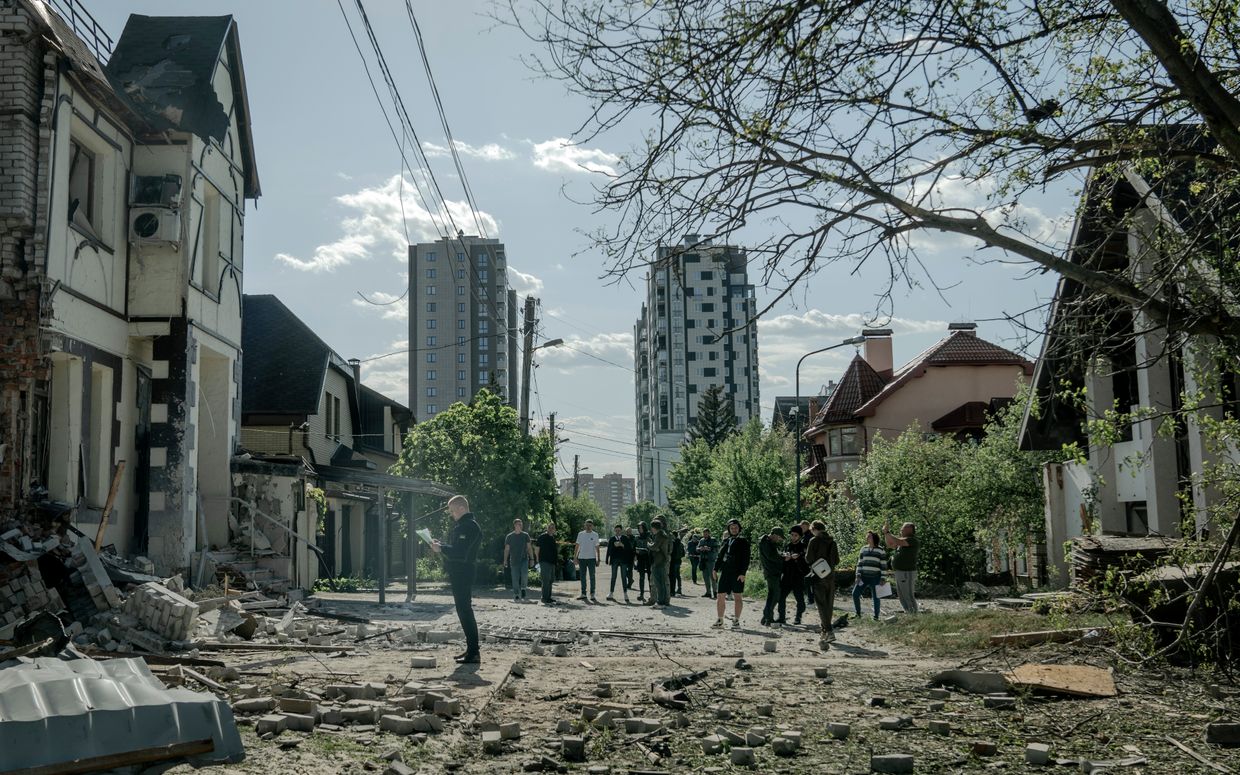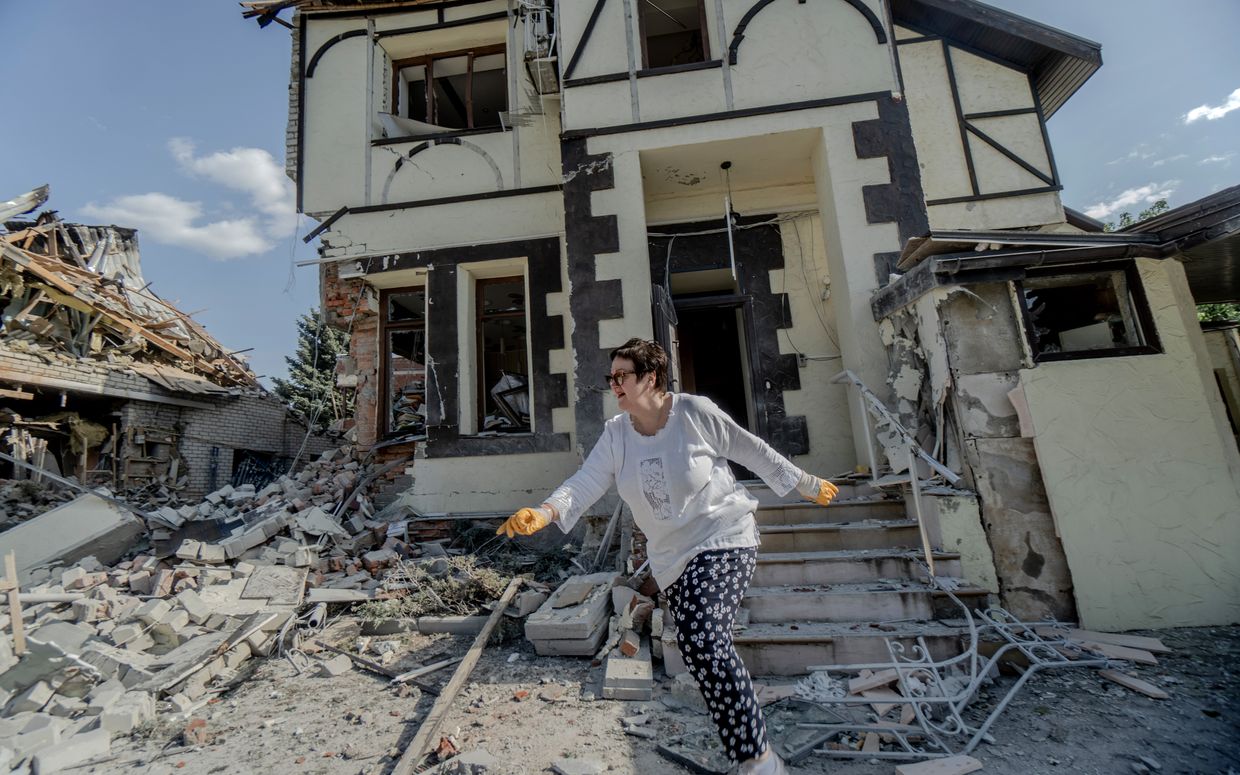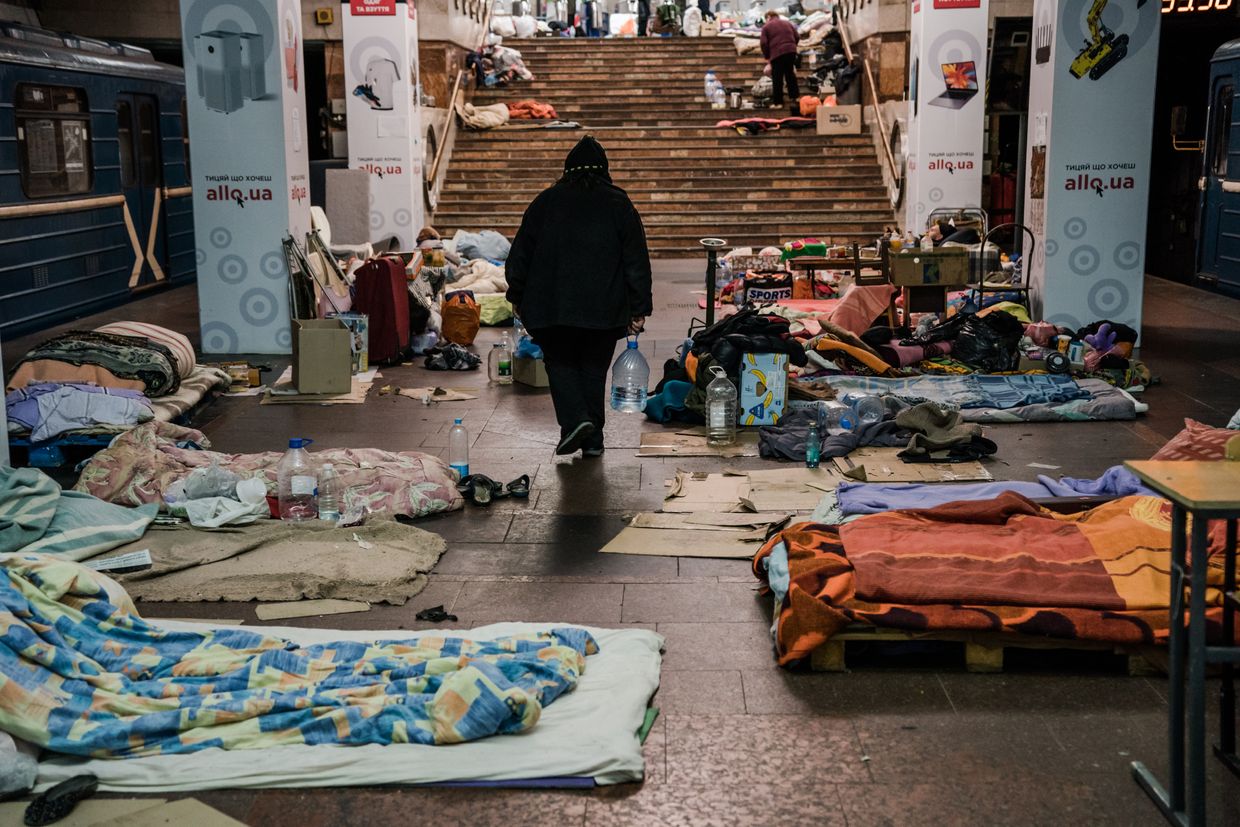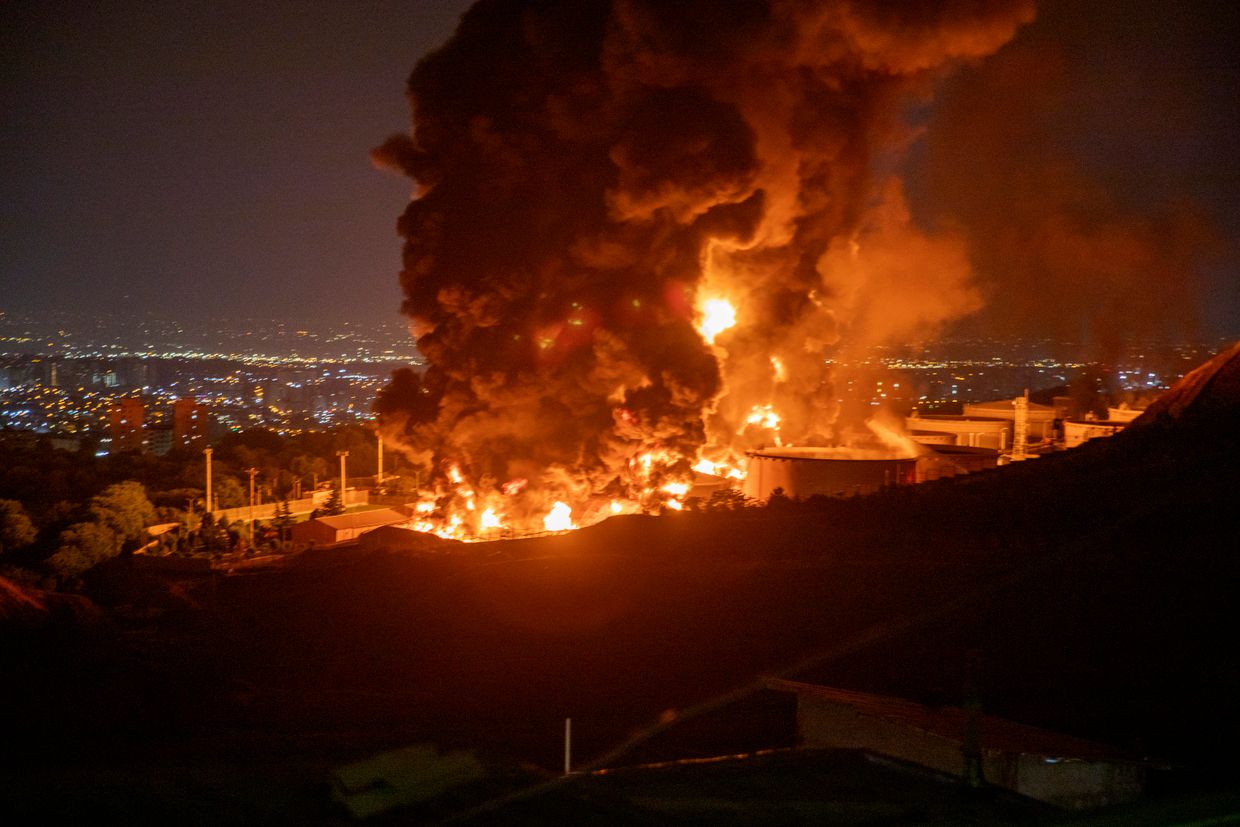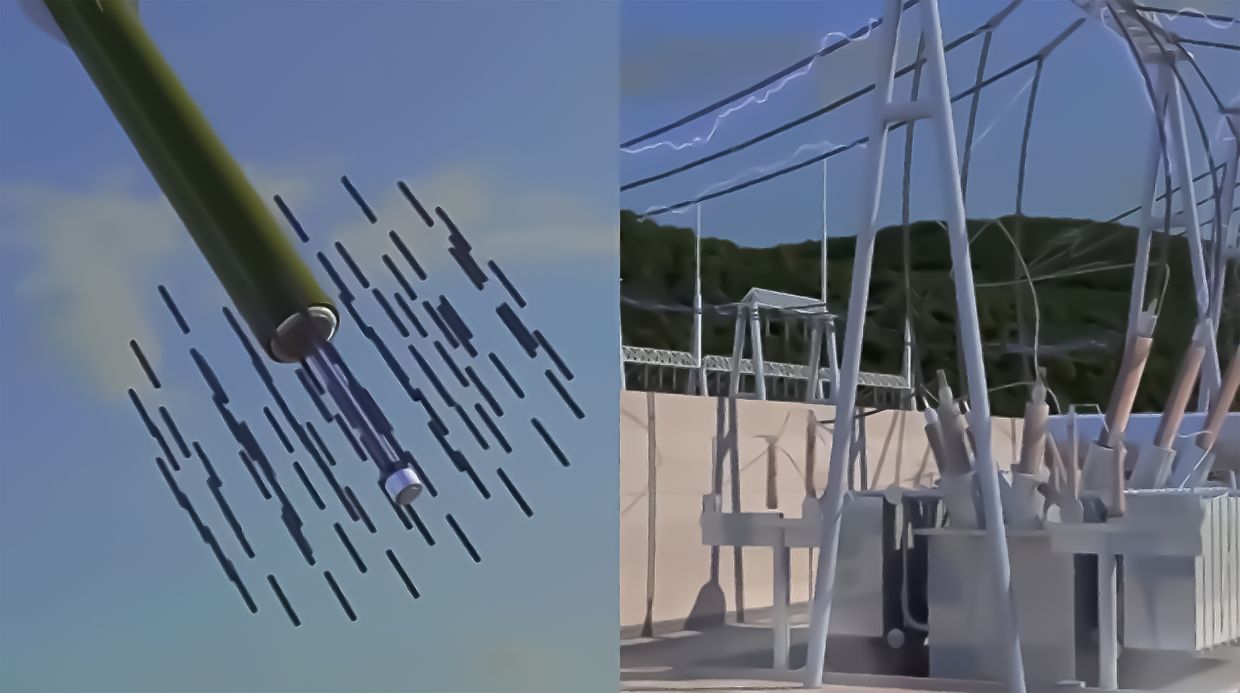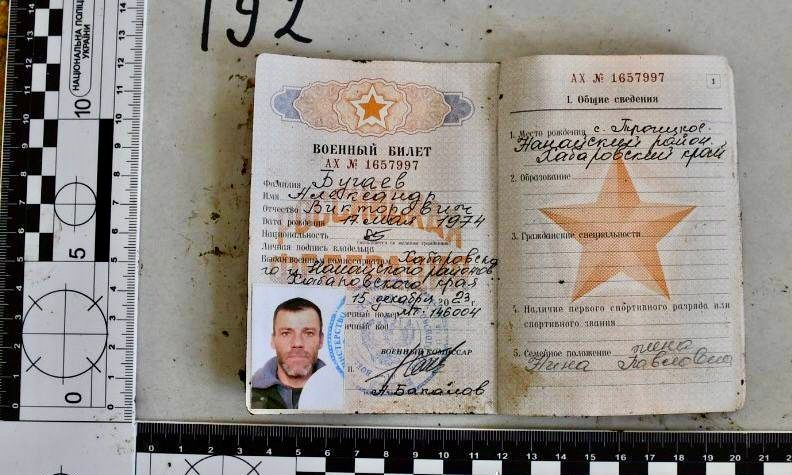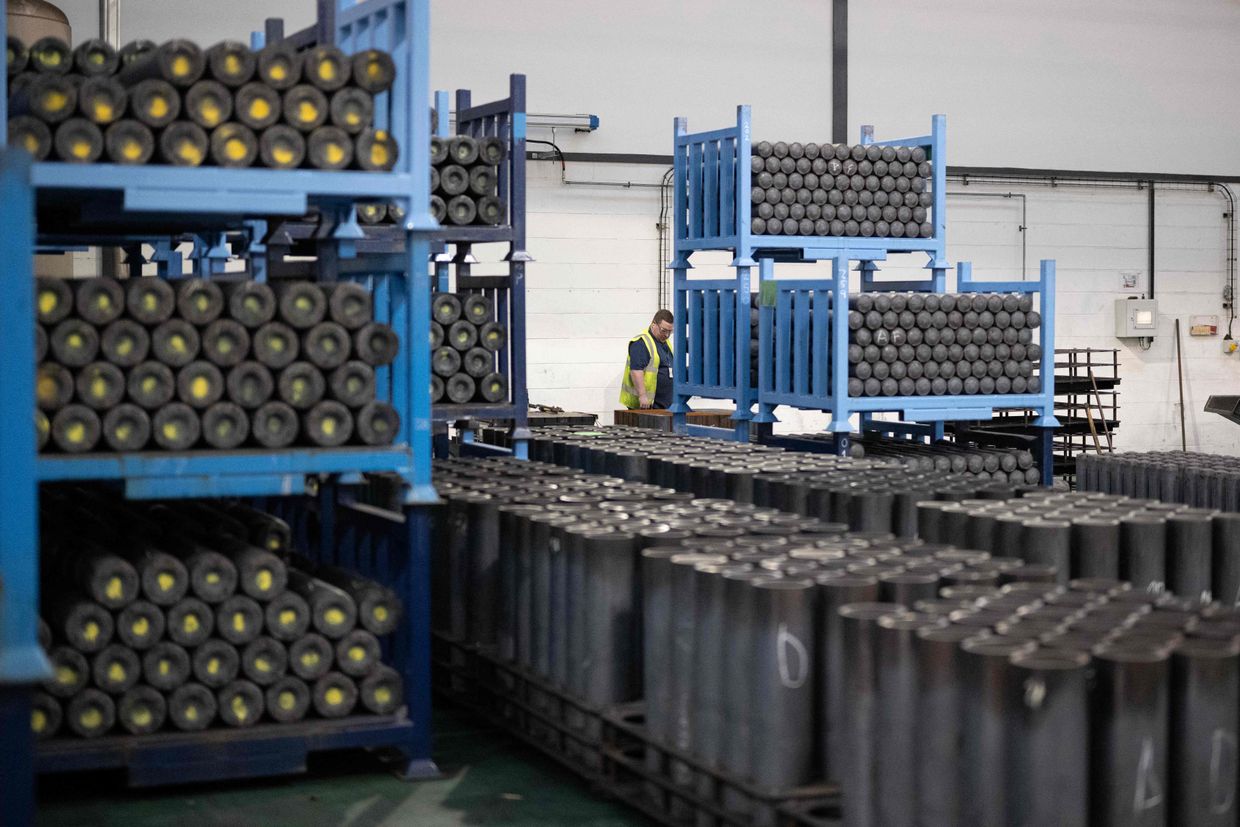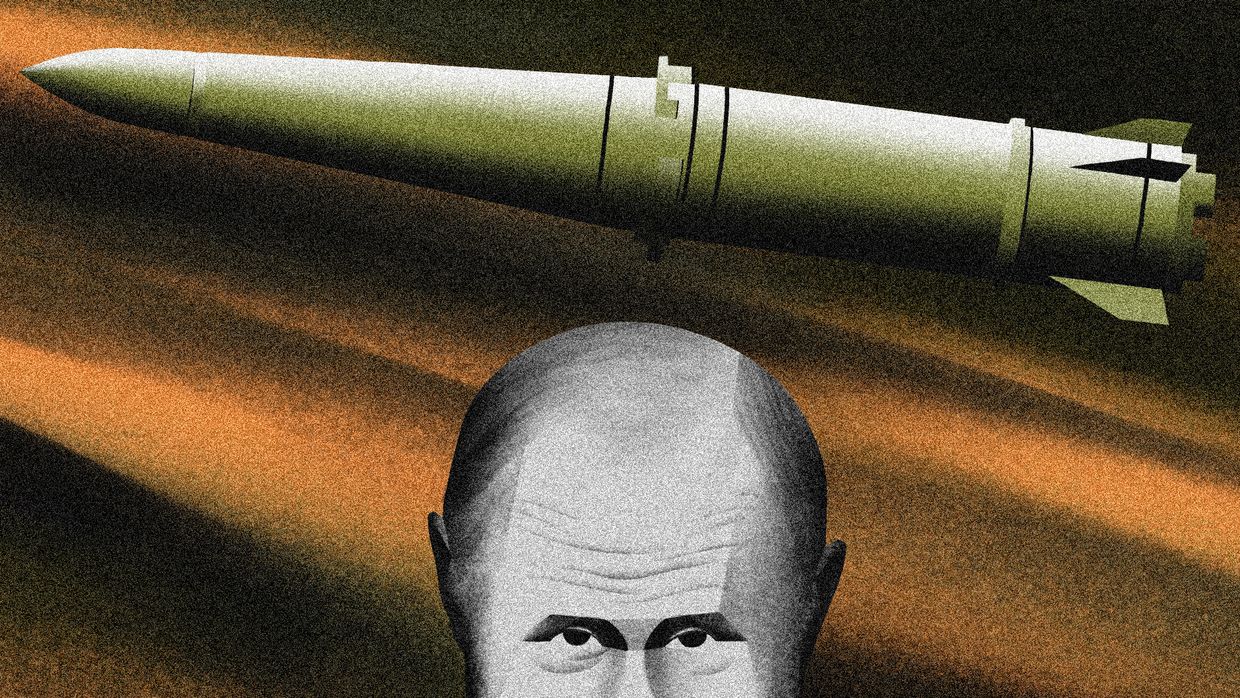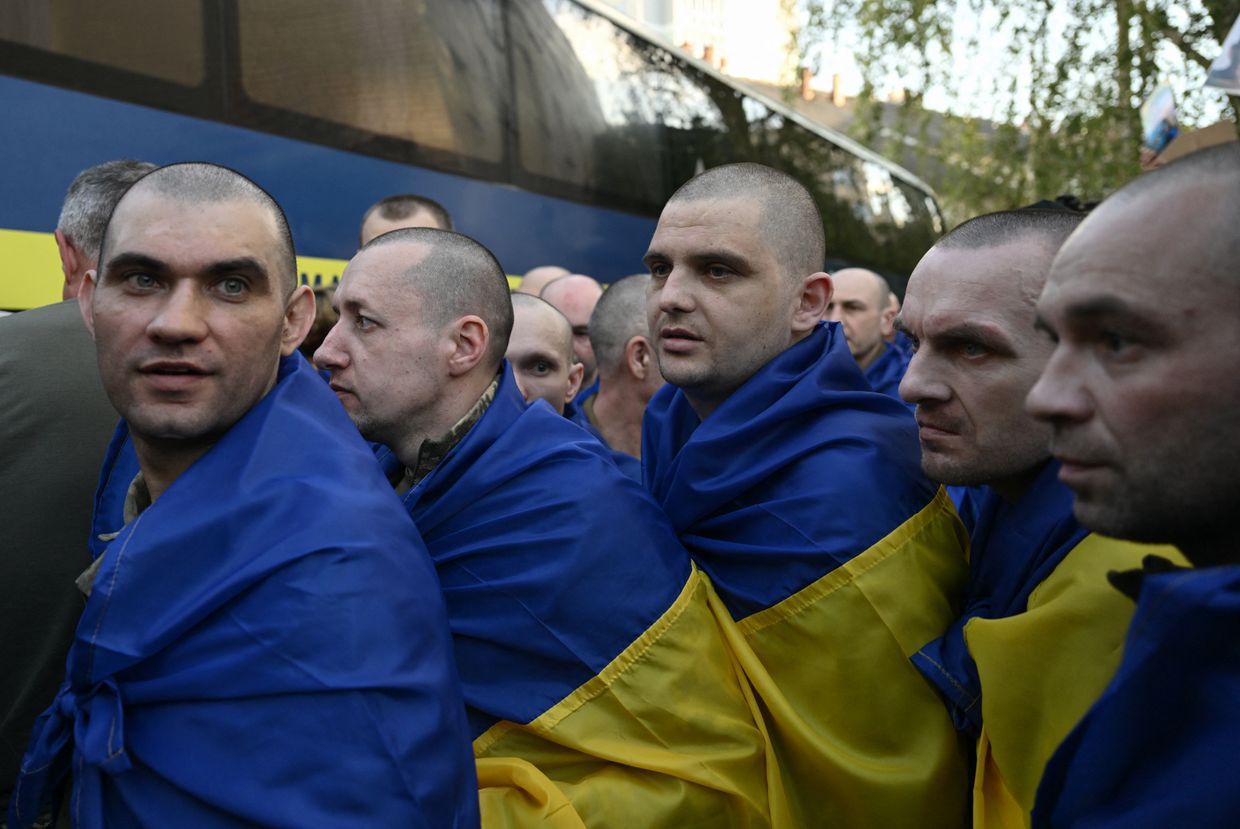The wail of the air raid siren in Ukraine, which signals potential or incoming attacks, has become as burdensome and commonplace a sound as that of traffic or construction work.
More than 40,000 air raid sirens lasting from minutes to hours throughout the day and night have sounded across Ukraine since Russia launched its full-scale war over two years ago, according to official reports.
Choosing to take shelter during a Russian attack can often mean the difference between life and death. However, in certain situations, such as when there is no time to activate air defense systems or heavy weaponry is launched, survival might just boil down to pure luck.
Yet, despite the threat the air raid siren signifies, many Ukrainians, even in frequently targeted cities like Kharkiv, Odesa, and Kramatorsk, often don’t seek refuge in a bomb shelter when they hear it.
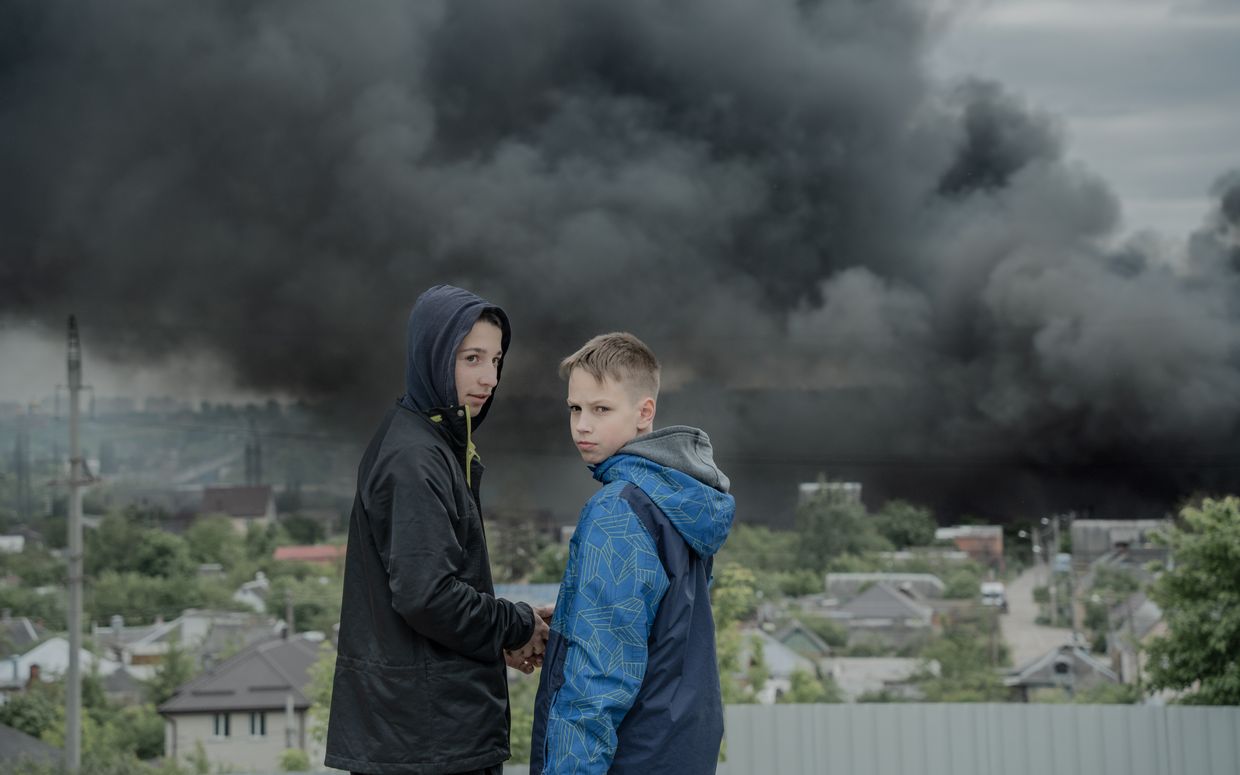
The decision not to go hide amid the threat of attack can vary by person and is usually influenced by factors like time of day, location, and whether a person is by themself or with their family.
And in some cases, the reluctance to take shelter is driven by a sense of fatalism, an outlook that has been adopted by many Ukrainians during the full-scale war that has killed tens of thousands of their fellow citizens.
“I think that people who stay in (a city like) Kharkiv today accept the strict rules of the game and understand that every day and every moment could indeed be the last,” Ivan Senin, a local poet and musician, told the Kyiv Independent.
‘One might just never leave’
On the first night of Russia’s full-scale war, Senin and his brother were in the latter's fourth-floor apartment in Kharkiv discussing the "rule of two walls," a strategy meant to better ensure a person’s safety by maintaining at least two walls between them and a potential blast impact.
"My brother put it quite simply: above us, there were two walls, and on three sides, there were three to four or even more walls. On the only side with a window, our forces were stationed,” Senin said.
“This would definitely protect us from multiple launch rocket attacks, but against the (ballistic) S-300 missile, Iskander missile, or something similar, not even a basement would save us.”
After that first night, Senin has mostly opted out of going to seek shelter, even though an S-300 missile landed near his building entrance in summer 2023, and a glide bomb early this May.
Kharkiv, situated about 30 kilometers (18 miles) from the Russian border, has faced repeated attacks over the past two and a half years. Protecting the airspace over Ukraine’s second-largest city is more challenging due to its proximity to Russia.
There were nights during the first weeks of the full-scale war when Russian forces bombarded Kharkiv with “seemingly everything they had,” according to Senin.
As Ukraine repelled Russian forces' attempts to seize the city in 2022 and liberated occupied settlements later that year along the border, the situation improved enough that people who had fled the city started moving back.
But the past several months have seen an increase in attacks against Kharkiv and the surrounding region.
In one recent attack at the end of May, Russian forces launched glide bombs at a home goods hypermarket in Kharkiv on a busy Saturday, killing 19 people and injuring almost 50 others.
Despite the uptake in attacks, most shops don’t close, public transport continues to run, and people in Kharkiv generally don’t react to the air raid sirens.
“I can’t say that I see any defiance or anything like that in this decision,” Senin said. “Unfortunately, this is just the reality of living in Kharkiv today.”
The air raid siren can sound multiple times a day in Kharkiv and last for hours at a time. At the end of July, Kharkiv broke the record for having the longest air raid siren since the start of the full-scale invasion. It lasted for nearly two days, starting at around 6:31 p.m. on July 23 and ending at around 9:02 p.m. on July 25.
“Responding to each of them and running to the shelter means that one might just never leave it.”
Feeling out the situation
Periods of varying frequency of Russian attacks on a city can influence a person's sense of impending danger when they hear the air raid siren, Yuliia Podvihina, a psychologist and art therapist based in Odesa, told the Kyiv Independent.
“From the very beginning (of the full-scale war) I decided I would act depending on the situation,” she explained.
Moreover, the air raid siren can go off in Ukraine even if there is no assured threat. The takeoff of a fighter jet from Russian or Belarusian territory might just be for training or relocation, but since these jets can carry hypersonic missiles that reach Ukraine in minutes, any takeoff triggers a nationwide air raid siren across the country.
This is why some Ukrainians also check both official and unofficial Telegram channels that indicate if their city is about to be attacked before deciding whether or not to seek shelter.
“But if it’s a ballistic missile then there’s no time to hide. You just hope it’s not for you,” said Podvihina.
The famous Black Sea port of Odesa has been a target of Russian forces since the onset of the full-scale war. Despite Russian claims that Odesa is a “Russian city” integral to the lore of the so-called Russian world, the city has suffered numerous attacks.
Podvigina moved back to Odesa last summer after living in Israel for the past 10 years. She currently works in a charitable foundation that helps the families of fallen Ukrainian soldiers.
In the days following a major Russian attack, some residents in that affected area of Odesa might go and seek shelter during subsequent air raid sirens, according to Podvihina. The fresh memory of the destruction caused by a missile or drone is enough to make people want to avoid taking any risks.
However, a lot of people choose to stay in their homes and just keep away from any windows, she added. Not everyone lives in a building with a shelter.
If there's enough notice in advance of a serious threat to the city when Podvihina is out during the day, she might try to find a nearby shelter. Once, she sought refuge in a museum, and another time in a pet store where she got to hold a lizard while she waited out the air raid siren.

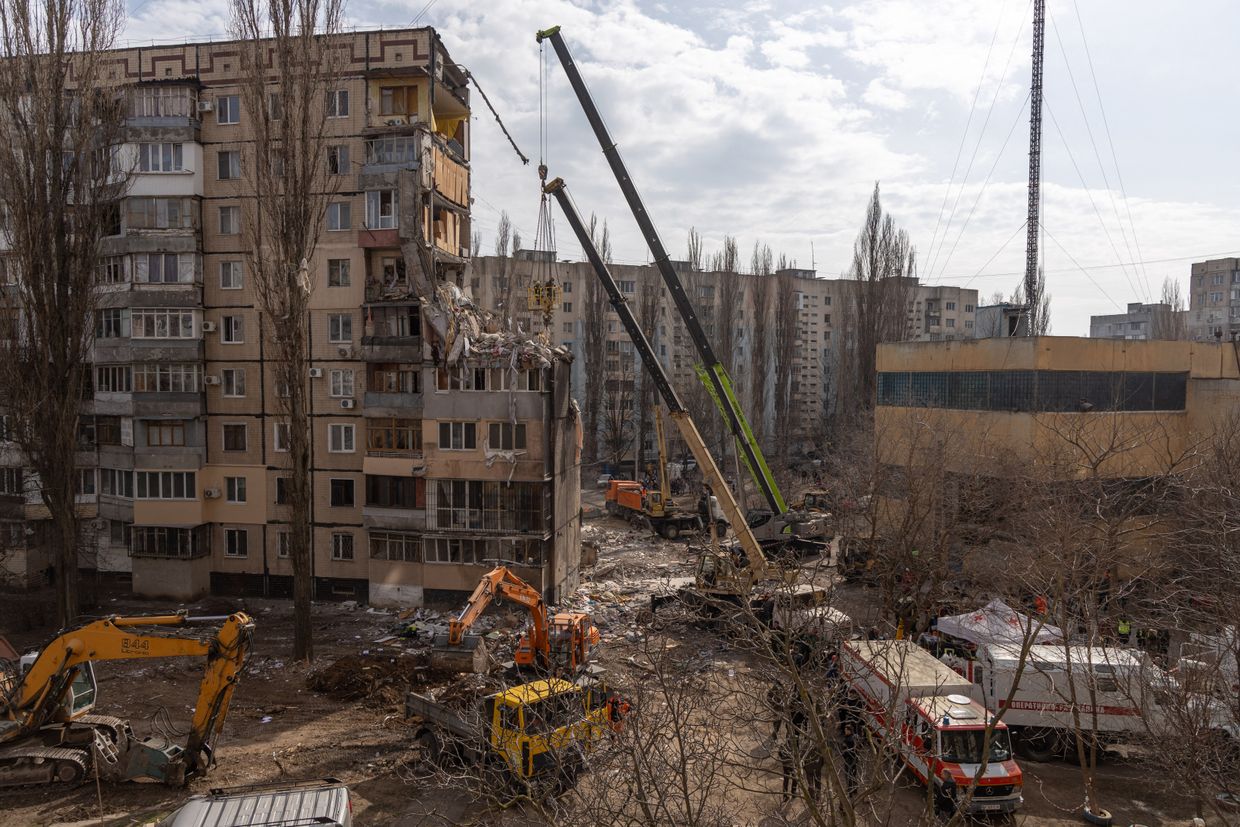
“But there were many cases during the day where I didn’t go anywhere. On those occasions, I was fortunate to not be in the part of the city that was hit,” she said in retrospect.
This includes the targeting of some of Odesa’s greatest architectural landmarks. The historic city center, which was named a UNESCO World Heritage Site in early 2023, was hit by Russian missiles later that July. The attack, which killed one civilian and injured around 18 others, also partially destroyed the historic Transfiguration Cathedral.
Russia has also targeted Odesa with weapons repurposed to cause maximum damage upon impact. Seven people were killed and around 30 others were injured when Russia launched a cluster munition-armed Iskander missile on April 29.
Not everyone is able to adapt as needed to this harsh reality. The constant threat of attacks and the need to decide whether to seek shelter, sometimes at the spur of the moment, have taken a toll on the mental health of some locals in Odesa. According to Podvihina, her aunt is now afraid to visit the city’s famous beaches, fearing that if she finds herself there, the air raid siren might one day signal the inevitable.
‘We’ve grown used to it’
War has been a part of daily life for people in the eastern Ukrainian city of Kramatorsk since 2014 when Russia first launched its invasion of Donetsk and Luhansk oblasts. That’s one of the reasons why confectionary chef Kateryna Seledtsova hasn't gone to a shelter during an air raid siren since the full-scale war began.
“There’s a short distance between Kramatorsk and the front line so missiles rarely target our city. It’s usually something smaller like S-300 or Grad rockets, which means it happens too quickly for the air raid siren to be triggered in time,” Seledtsova told the Kyiv Independent.
Sometimes, if shelling gets “really scary,” she’ll make sure to adhere to the “rule of two walls” and stay away from windows.
When the air raid siren sounds over Donetsk Oblast, it’s usually related to something happening in nearby Kharkiv or Dnipropetrovsk oblasts, according to Seledtsova. The people in Kramatorsk have “long since grown used to it all.”
Kramatorsk became the de facto capital of Ukrainian-controlled Donetsk Oblast after the regional capital, Donetsk city, fell under Russian occupation during the 2014 invasion. Kramatorsk was also briefly occupied by Russian forces before Ukraine liberated it in July 2014.
In the years since then, Kramatorsk and other Ukrainian-held cities and villages in the region have frequently been targeted by Russian forces launching attacks from occupied settlements.
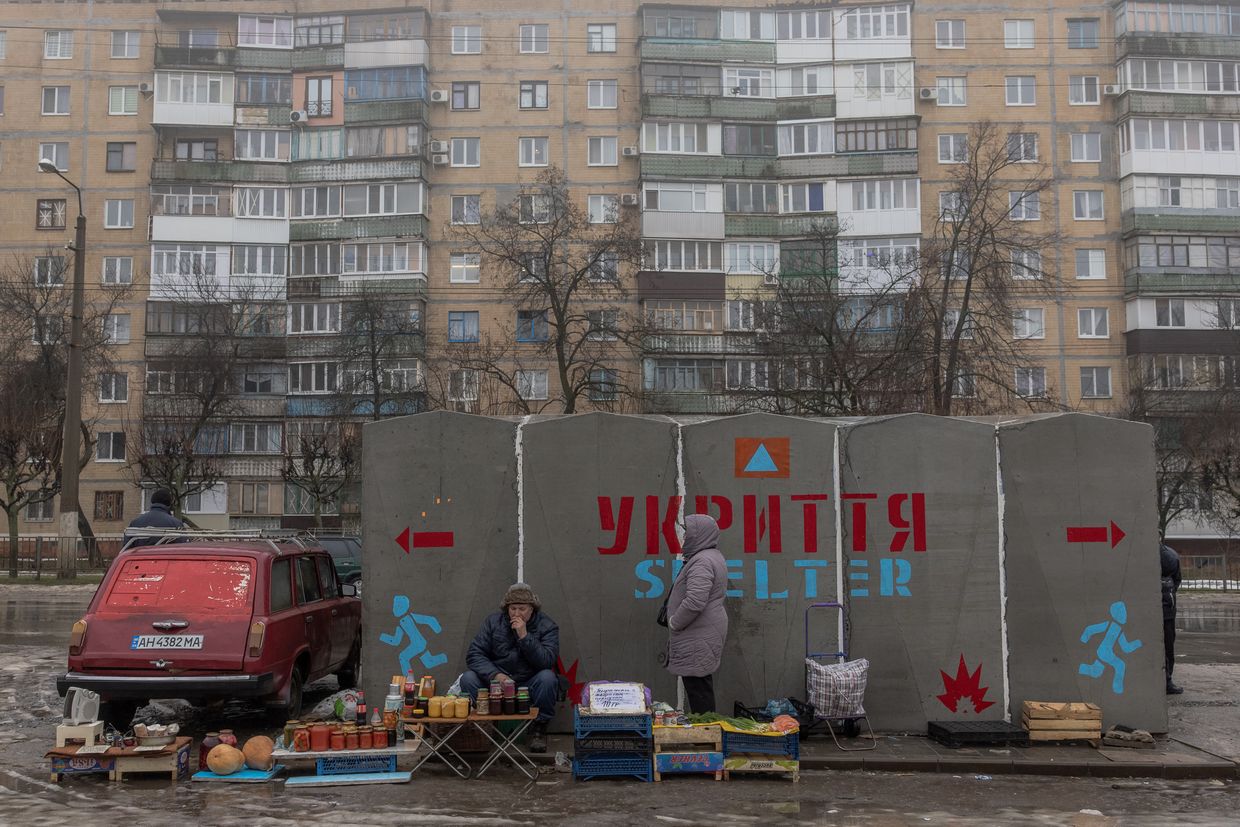
The fact that the sounds of war have become so commonplace in Kramatorsk over the past decade means that the air raid siren doesn’t have much of a negative impact on Seledtsova or the cafe that she runs.
The cafe's design, with no panoramic windows or much glass, makes it a suitable spot for people in the front-line city to relax and enjoy coffee or pastries in relative safety compared to other locations.
“There was a point where we were working (after the start of the full-scale war) and nobody else was yet,” Seledtsova said.
Shelling has hit nearby areas more than once but Seledtsova’s cafe hasn’t sustained any significant damage during those attacks.
"I'm happy about that at least.”
Note from the author:
Hi, this is Kate Tsurkan, sharing an important human story from Ukraine. Some aspects of the war, like people choosing to not go to a shelter during an air raid siren, might be difficult to understand for those living in peace abroad. I hope by giving a voice to Ukrainians in some of the most affected cities that the reality of war becomes a bit more clearer.
If you liked reading this article, please consider continuing to support our reporting to see more like this.





